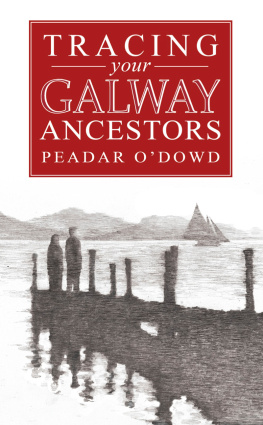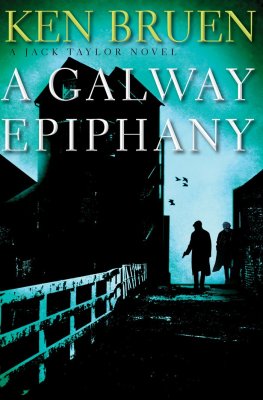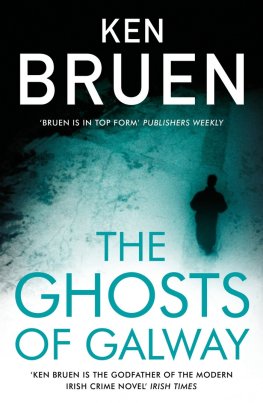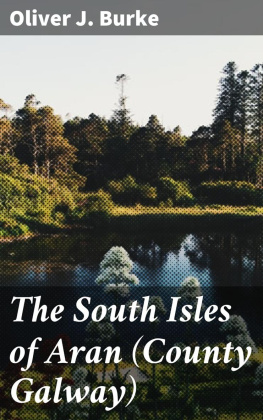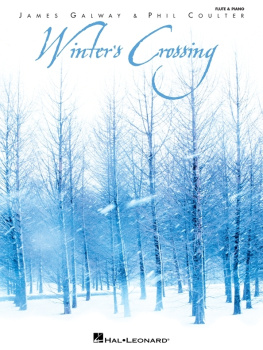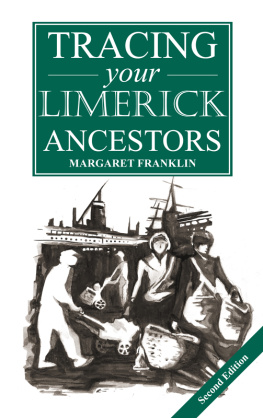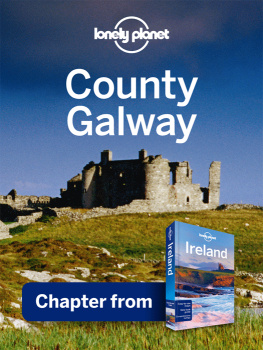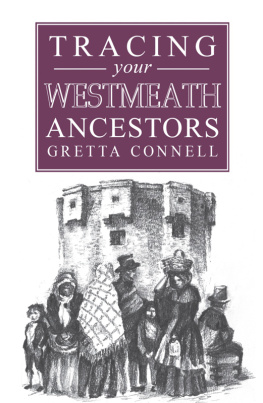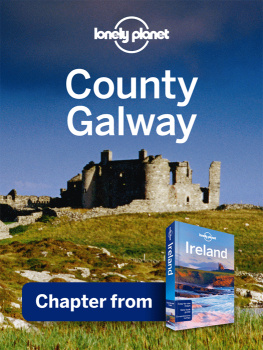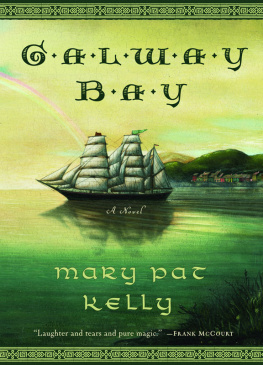The memory of Dubhaltach Mac Fhirbhisigh (alias Duald MacFirbis) c. 1600-71, who, as a genealogist in particular, was the last traditionally-trained member of that hereditary learned class, which played such an important part in recording our past. Galway, during the period leading up to the Cromwellian siege of 1651-2, was according to Nollaig Murale, the scene of an astounding feat of scholarship the compilation by Dubhaltach of his monumental Leabhar Genealach or Book of Genealogies, which deserves to be placed on a par with such works as Annla Roghachta ireann (the Annals of the Four Masters).
Acknowledgements
I wish to express my gratitude to the personal assistance received from the staff of the following:
Church of Jesus Christ of Latter-Day Saints Family Search Division, Salt Lake City.
East Galway Family History Society Company, Ltd.
Flyleaf Press.
Galway County Library Headquarters.
Galway Family History Society (West) Ltd.
GMIT Library.
Heritage Section, Galway County Council.
Kennys Bookshop and Art Galleries Ltd.
National Library of Ireland.
Special Collections and Archives Services, Leabharlann James Hardiman, NUI Galway.
Contents
Abbreviations Used
| b. | birth/born |
| bapt. | Baptism |
| BL | British Library |
| c. | circa |
| Co. | County |
| CoI | Church of Ireland |
| CDB | Congested Districts Boards |
| d. | death/died |
| DED | District Electoral Division |
| ed. | editor/edited (by) |
| EGFHS | East Galway Family History Society |
| FHS | Family History Society |
| GCCA | Galway County Council Archives |
| GCL | Galway County Libraries |
| GFHSW | Galway Family History Society West Ltd. |
| GM | Gort Inse Guaire. See Chapter 12 |
| GMIT | Galway/Mayo Institute of Technology |
| GO | Genealogical Office |
| GRO | General Register Office |
| IGP | Irish Genealogical Project |
| IMC | Irish Manuscripts Commission |
| Ir. Anc. | Irish Ancestor |
| Ir. Gen. | Irish Genealogist |
| J. or Jnl. | Journal |
| JAPMD | Journal of Association for Preservation of Memorials of the Dead |
| JH | James Hardiman. History of Galway. See Chapter 12 |
| JHLSC | James Hardiman Library Special Collections (NUIG) |
| JGAHS | Journal of the Galway Archaeological & Historical Society |
| JOTS | Journal of the Old Tuam Society |
| Lib. | Library |
| LGMIT | Library of the Galway/Mayo Institute of Technology m./marr. marriage/married |
| MG | Galway History and Society. See Chapter 12 |
| Ms/Mss | Manuscript/s |
| N | Tribes and other Galway Families. See Chapter 12 |
| NAI | National Archives of Ireland (formerly PRO) |
| n.d. | not dated |
| NLI | National Library of Ireland |
| NUIG | National University of Ireland, Galway |
| OF | R. OFlaherty Description of Connaught. See Chapter 12 |
| p./pp. | page/pages |
| PLU | Poor Law Union |
| PRO | Public Record Office (now National Archives of Ireland) |
| PRONI | Public Record Office of Northern Ireland |
| RC | Roman Catholic |
| RCB(L) | Representative Church Body (Library) |
| RIA | Royal Irish Academy |
| RL | ORegan and Lacey. Abbeyknockmoy. See Chapter 12 |
| SS | Sen Spellissy. History of Galway City. See Chapter 12 |
| SLC | Family History Library, Salt Lake City (and branches) |
| TM | Tadhg MacLochlain. Historical Survey. See Chapter 12 |
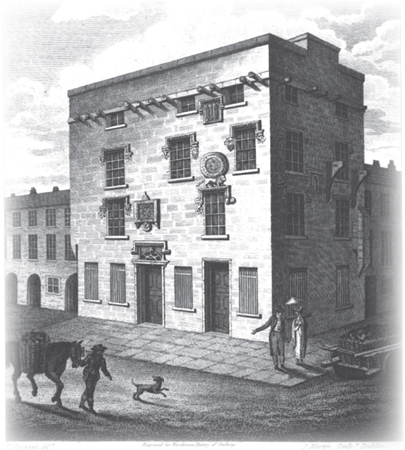
Lynchs Castle Galway, residence of the Mayor in 1654
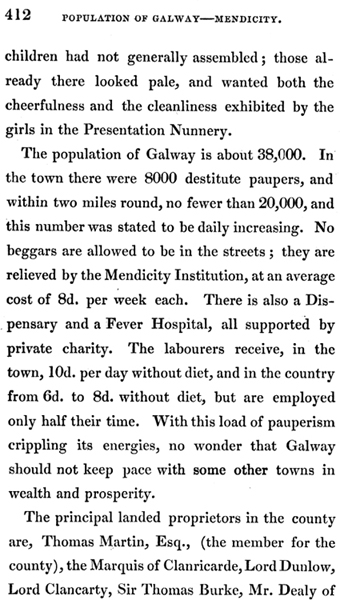
A page from The Miseries and Beauties of Ireland by Jonathan Binns (London 1837).
Chapter 1 Introduction
County Galway is the second largest county in Ireland covering an area of 2,293 sq. miles (5,939 sq. km) with its chief centre of population, Galway City, divided by the River Corrib flowing from Lough Corrib, which in turn separates the high lands of Connemara to the west from farm lands to the east. The citys population of 72,414 (according to the 2006 census), combined with 159,052 in the county are the culmination of a long human presence imbedded in this western landscape dating back to Mesolithic or Middle Stone Ages times over 8,000 years ago.
Unlike other Irish urban areas, Galway City was not founded by a Viking influx, but owes its origins to 13th century Norman adventurers, led by Richard de Burgo, who established this, the most westerly of his Anglo-Norman settlements, on the eastern bank of the Corrib estuary in the 1230s.
To the native Corribside septs banished westwards beyond the river, these newcomers were Gall or strangers, and in time, this new growth centre gained the Gaelic title, Gaillimh, or The Place of the Strangers, with the former mutating into the familiar name of Galway today. The rising importance of this new settlement, which accumulated its prosperity on overseas trade, saw its name applied also to the county, when new territorial boundaries were drawn up in the wider province of Connacht in 1576.
Not surprisingly, the de Burgos, whose name was later anglicised to Burkes (or Bourkes in nearby County Mayo), introduced many newcomers into their confiscated western lands such as the powerful Berminghams of Athenry. The evolving town of Galway eventually came to be ruled by fourteen merchant families later known as The Tribes of Galway. These were the families Athy, Blake, Bodkin, Browne, Darcy, Deane, Font, French, Joyce, Kirwan, Lynch, Martin, Morris and Skerrett. Some of these powerful families later spread their entrepreneurial expertise into managing country estates throughout the county. Many family members eventually emigrated and opened new commercial enterprises in both the old (Europe) and new (America) worlds.

